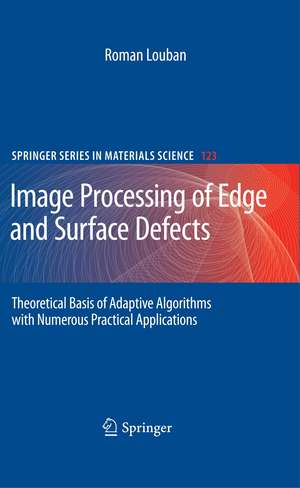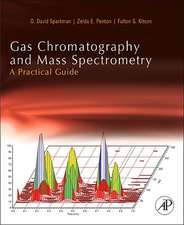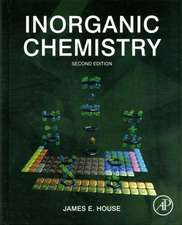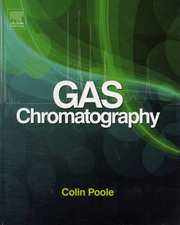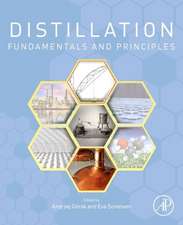Image Processing of Edge and Surface Defects: Theoretical Basis of Adaptive Algorithms with Numerous Practical Applications: Springer Series in Materials Science, cartea 123
Autor Roman Loubanen Limba Engleză Paperback – 4 mai 2012
| Toate formatele și edițiile | Preț | Express |
|---|---|---|
| Paperback (1) | 635.15 lei 6-8 săpt. | |
| Springer Berlin, Heidelberg – 4 mai 2012 | 635.15 lei 6-8 săpt. | |
| Hardback (1) | 642.51 lei 6-8 săpt. | |
| Springer Berlin, Heidelberg – 16 sep 2009 | 642.51 lei 6-8 săpt. |
Din seria Springer Series in Materials Science
- 18%
 Preț: 1820.22 lei
Preț: 1820.22 lei - 18%
 Preț: 776.09 lei
Preț: 776.09 lei - 24%
 Preț: 689.68 lei
Preț: 689.68 lei - 18%
 Preț: 968.96 lei
Preț: 968.96 lei - 20%
 Preț: 568.94 lei
Preț: 568.94 lei - 18%
 Preț: 953.65 lei
Preț: 953.65 lei - 18%
 Preț: 902.36 lei
Preț: 902.36 lei - 18%
 Preț: 953.65 lei
Preț: 953.65 lei - 20%
 Preț: 948.41 lei
Preț: 948.41 lei - 18%
 Preț: 1143.07 lei
Preț: 1143.07 lei - 18%
 Preț: 1111.53 lei
Preț: 1111.53 lei - 18%
 Preț: 1103.62 lei
Preț: 1103.62 lei - 18%
 Preț: 1225.94 lei
Preț: 1225.94 lei -
 Preț: 473.91 lei
Preț: 473.91 lei - 18%
 Preț: 782.42 lei
Preț: 782.42 lei -
 Preț: 433.47 lei
Preț: 433.47 lei - 18%
 Preț: 1116.40 lei
Preț: 1116.40 lei - 18%
 Preț: 946.24 lei
Preț: 946.24 lei - 18%
 Preț: 945.20 lei
Preț: 945.20 lei - 15%
 Preț: 641.20 lei
Preț: 641.20 lei - 18%
 Preț: 958.56 lei
Preț: 958.56 lei - 18%
 Preț: 1224.36 lei
Preț: 1224.36 lei - 15%
 Preț: 644.82 lei
Preț: 644.82 lei - 24%
 Preț: 833.43 lei
Preț: 833.43 lei - 24%
 Preț: 1060.33 lei
Preț: 1060.33 lei - 18%
 Preț: 964.10 lei
Preț: 964.10 lei - 18%
 Preț: 1224.36 lei
Preț: 1224.36 lei - 18%
 Preț: 1221.20 lei
Preț: 1221.20 lei - 18%
 Preț: 946.87 lei
Preț: 946.87 lei - 18%
 Preț: 1836.92 lei
Preț: 1836.92 lei - 15%
 Preț: 643.34 lei
Preț: 643.34 lei - 18%
 Preț: 1246.32 lei
Preț: 1246.32 lei - 18%
 Preț: 956.81 lei
Preț: 956.81 lei - 18%
 Preț: 953.52 lei
Preț: 953.52 lei - 15%
 Preț: 637.59 lei
Preț: 637.59 lei - 24%
 Preț: 1060.87 lei
Preț: 1060.87 lei
Preț: 635.15 lei
Preț vechi: 747.23 lei
-15% Nou
Puncte Express: 953
Preț estimativ în valută:
121.53€ • 127.23$ • 100.56£
121.53€ • 127.23$ • 100.56£
Carte tipărită la comandă
Livrare economică 05-19 aprilie
Preluare comenzi: 021 569.72.76
Specificații
ISBN-13: 9783642260353
ISBN-10: 3642260357
Pagini: 180
Ilustrații: XI, 168 p. 128 illus., 8 illus. in color.
Dimensiuni: 155 x 235 x 9 mm
Greutate: 0.27 kg
Ediția:2009
Editura: Springer Berlin, Heidelberg
Colecția Springer
Seria Springer Series in Materials Science
Locul publicării:Berlin, Heidelberg, Germany
ISBN-10: 3642260357
Pagini: 180
Ilustrații: XI, 168 p. 128 illus., 8 illus. in color.
Dimensiuni: 155 x 235 x 9 mm
Greutate: 0.27 kg
Ediția:2009
Editura: Springer Berlin, Heidelberg
Colecția Springer
Seria Springer Series in Materials Science
Locul publicării:Berlin, Heidelberg, Germany
Public țintă
Professional/practitionerCuprins
Edge Detection.- Defect Detection on an Edge.- Defect Detection on an Inhomogeneous High-Contrast Surface.- Defect Detection on an Inhomogeneous Structured Surface.- Defect Detection in Turbo Mode.- Adaptive Edge and Defect Detection as a basis for Automated Lumber Classification and Optimisation.- Object Detection on Images Captured Using a Special Equipment.- Before an Image Processing System is Used.
Recenzii
Aus den Rezensionen:“... Die HeIligkeitsverhältnisse an der Kante einer Materialbeschädigung werden als Gauß'sche Verteilung einer Strahlung interpretiert und in einem physikalischen Modell erfasst. Basierend auf diesem Modell wurden neue Methoden entwickelt, mit denen unterschiedliche Fehlertypen unabhängig von den Helligkeitsbedingungen eines aufgenommenen Bildes ermittelt werden können. ... Zahlreiche Anwendungsbeispiele veranschaulichen die theoretischen Ausführungen.“ (in: QZ Qualität und Zuverlässigkeit, March/2010, Issue 3, S. 13)
Notă biografică
Born on February 26, 1954 in Kiev, Ukraine.
1971 – 1976 Study at the State University of Woronezh, Russia. Graduation: Qualified physicist with award.
1977 – 1992 Scientific research at the Institute of Material Problems of the Science Academy, Kiev, Ukraine. Area of studies: plasma physics, composed materials.
1987 Promotion with the grade: Doctor of Engineering Sciences
1992 – 2006 hema electronic GmbH, Aalen, Department: machine vision, Development engineer, Project director. Main topic: Algorithmics for defect recognition on edges and surfaces
Since April 2006 Thermosensorik GmbH, Erlangen, Manager Software Engineering, IP Expert
1971 – 1976 Study at the State University of Woronezh, Russia. Graduation: Qualified physicist with award.
1977 – 1992 Scientific research at the Institute of Material Problems of the Science Academy, Kiev, Ukraine. Area of studies: plasma physics, composed materials.
1987 Promotion with the grade: Doctor of Engineering Sciences
1992 – 2006 hema electronic GmbH, Aalen, Department: machine vision, Development engineer, Project director. Main topic: Algorithmics for defect recognition on edges and surfaces
Since April 2006 Thermosensorik GmbH, Erlangen, Manager Software Engineering, IP Expert
Textul de pe ultima copertă
The edge and surface inspection is one of the most important and most challenging tasks in quality assessment in industrial production. Typical defects are cracks, inclusions, pores, surface flakings, partial or complete tears of material surface and s.o. These defects can occur through defective source material or through extreme strain during machining process.
Detection of defects on a materialc surface can be complicated due to extremely varying degrees of material brightness or due to shadow areas, caused by the folding of the surface. Furthermore, impurities or surface discolourations can lead to artefacts that can be detected as pseudo-defects.
The brightness conditions on the edge of material defects are interpreted as a Gauss distribution of a radiation and used for a physical model. Basing on this model, an essentially new set of adaptive edge-based algorithms was developed. Using these methods, different types of defects can be detected, without the measurements being dependent on local or global brightness conditions of the image taken. The new adaptive edge-based algorithms allow a defect detection on different materials, like metal, ceramics, plastics and stone.
These methods make it possible to explicitly detect all kinds of different defects independently of their size, form and position and of the surface to be inspected. The adaptive edge-based methods provide a very wide spectrum of applications.
Detection of defects on a materialc surface can be complicated due to extremely varying degrees of material brightness or due to shadow areas, caused by the folding of the surface. Furthermore, impurities or surface discolourations can lead to artefacts that can be detected as pseudo-defects.
The brightness conditions on the edge of material defects are interpreted as a Gauss distribution of a radiation and used for a physical model. Basing on this model, an essentially new set of adaptive edge-based algorithms was developed. Using these methods, different types of defects can be detected, without the measurements being dependent on local or global brightness conditions of the image taken. The new adaptive edge-based algorithms allow a defect detection on different materials, like metal, ceramics, plastics and stone.
These methods make it possible to explicitly detect all kinds of different defects independently of their size, form and position and of the surface to be inspected. The adaptive edge-based methods provide a very wide spectrum of applications.
Caracteristici
Detailed description of optical methods for defect recognition Integrates the basics of the methods and their applications Provides a reference for researchers and engineers
